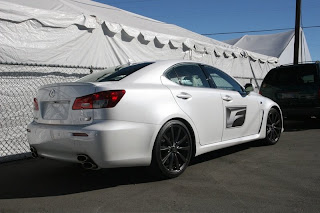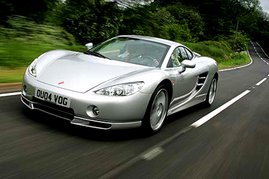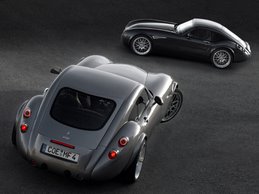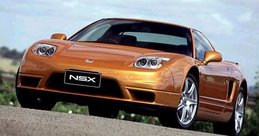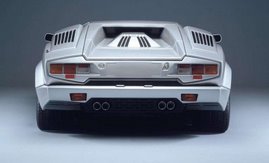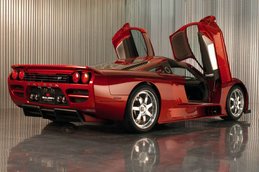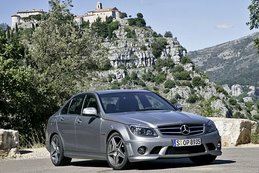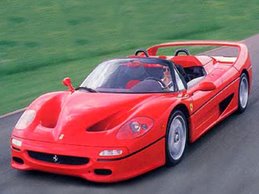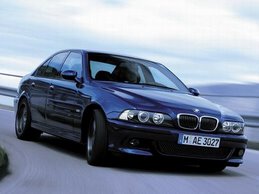 By Bruce McCulloch
By Bruce McCulloch Last week, an Australian publication by the name of Autocult, reported that Swedish supercar manufacturer Koenigsegg is heading into dire financial troubles. And according to Sweden’s Realtid, Koenigsegg, the company known for it’s over-the-top 240mph various “CC” models is currently 240,000 euros in debt and is desperately in search of new investors. Mind you, that debt of 240k is hardly anything compared to what Koenigsegg Automotive reportedly lost in 2006 – an eye-watering $3.6 million USD.
While company turnover actually rose slightly from $24.7 million to 24.8 million (2005 and 2006, respectively), the company claims its losing money at an unbelievable rate. The company makes the claim that it’s costing them a ridiculous $4 million dollars to produce each vehicle and the only way to offset the negative cash flow will be to increase their current yearly production of around 15 units.
For those who have followed the supercar world, this isn’t going to be much of a surprise. This company has been nothing a multitude of disasters since Day One. The company’s young and wealthy entrepreneur, Christian Von Koenigsegg (CVK), has showed every sign of being a pushy business man with little understanding of the automotive world.
Koenigsegg’s first real troubles are within its research and development program. Despite CVK’s great mass of wealth, his personal money is not enough to turn the company around. Of course, this all could have been avoided had the company not set such high production standards; I’m not sure how much of the exact number which they aimed to achieve, but if they were expecting 50+ units per year, they were as high as a kite on a windy day.
Tis true, today’s market gives most any company the chance to indulge themselves in success, but nevertheless, in limited quantities. This is where comparable companies such as Spyker Automotive and Pagani Automobili are in a much better position; Spyker is having much success selling some 100+ vehicles per year with the latter selling some 15 vehicles per year. The difference here is that these companies have backed up their costing development by properly estimating annual production and having a sufficient amount of back-up funds (investors included).
For instance, Pagani Automobili (producer of the “Zonda” supercar) is absolutely thriving at the volume of business they have currently, and is planning to release a track day-inspired Zonda at the upcoming Frankfurt Autoshow in Germany. One of the main reasons why Pagani is such a successful company for its size is because of the company with which it’s affiliated with, “Modena Design”. Modena design, set up in 1988, is an industry supplier that offers a numbers of carbon fibre applications and designers to those who desire same; this arrangement thus allows Horacio Pagani and his supercar to make up for any possible losses in profit. It’s an excellent quid pro quo which can only leave Pagani successful. What also contributes to their overall financial health is when Horacio Pagani and affiliated dip their hands into a number of other projects including the design of a boat and even a Hi-FI stereo system. Yes, its not auto-related, but this type of product planning is not only complimenting his brand by establishing new high-end name items to the company, but linking him with a number of investors and ultimately helping him create a upscale image and upscale brand image for the company.
Entrepreneur and tuner-car-extraordinaire, Steve Saleen, also runs on this general (and rather logical) concept. The extreme success and backing which his former tuning company is known for has helped to offset any possible losses in income; however, unlike the Swedish manufacturer, Saleen generally planned his future (production limits, etc) on reasonable expectations. This approach was instrumental in Saleen commanding a premium price when he sold the majority ownership of his company to an outside firm. He is now involved with both a company that will import Chinese pickups and SUVs into the States, as well as another, brand-new company that will build high-performance vehicles in the U.S. Suffice to say, both Horacio Pagani and Steve Saleen have, or, have had, companies which are thriving because they were set up properly. Over years of business, the two manufacturer companies (Modena Design and Saleen) were not only able to establish reasonable profit but bring a whole crop of investors. One can strongly doubt whether Koenigsegg ever had any real investors; perhaps he thought he could compensate with his own check book if they ever came across financial troubles like this?
What’s also might be worth mentioning is Koenigsegg’s ever-declining image thanks to the poor performance and awful reliability of its cars. When his 655bhp CC8S supercar was released in 2002, CVK claimed it would immediately be the world’s fastest car. He claimed that it would easily achieve zero-to-sixty mph in just 3.0 seconds and take the top speed world speed title from the almighty McLaren F1. Truth is, each and every model has consistently failed to achieve their claims. The initial model, which claimed such bombastic figures, pulled up a zero-to-sixty figure of 4.4 seconds and a zero-to-one hundred figure of 8.0 seconds by the British publication AutoCar; a far cry from what was expected from a horsepower-to-weight ratio like it has. Nor did the first model (coined the “CC8S”) ever achieve its claimed top speed of 245 mph. Instead, it took Koenigsegg a few years later with an insane 200+bhp increase to achieve a top speed of just 241 mph. A full one mph faster than the McLaren F1.
Performance inconsistency (and failure), even with the 800+bhp CCR, has continued with its various performance figures from the track to its straight line acceleration.
Furthermore, Koenigsegg’s vehicles have gained a deserved reputation for being amongst the most unreliable supercars on the market. Just about every one which was sent to journalists around the world has failed and in every way imaginable too; from engine failures to overheating. Even the loyal owners of Koenigsegg cars have showed much concern about the vehicle’s unpredictable reliability.
This to me would indicate that this vehicle was always a victim of rushed development. There’s no excuse for such poor reliability, especially when companies like Pagani Automobili are not suffering from it; they are keeping their image clean and their customers happy.
As if over-promising on performance and unreliability issues weren’t enough, Koenigseggs have also gained a reputation for being un-drivable and uncontrollable near their limits with many owners and journalists pileing them into walls with unsettling frequency.

Whether any of these attributes are actually affecting Koenigsegg sales is up for debate. I think most would agree though, it certainly can’t help.
Poor Product Planning:
What makes the companies operations even worse is their product planning, or rather, the lack thereof.
The company’s first effort in 2002 was the CC8S and with 655bhp it should have been enough. It wasn’t though and for a reason unbeknownst to anyone it was deemed appropriate to introduce an updated model which they called the “CCR” benefiting from an extra 200bhp. And in 2005, the company thought it was yet again appropriate to release a car technically identical to the CCR, but in a slightly new body shell and throw a “CCX” badge on it. And in 2006, both a bio-fuelled and racing version of the CCX were released. Both of these cars were answers to questions no was asking. There was and still is no demand for either type of car. This is utterly ridiculous and obviously ill-considered marketing from a company without much clue as to what they’re doing. While I won’t deny the market can sometimes be unpredictable, it’s clear that a general lack of knowledge of market demand existed at Koenigsegg.
In the opinion of this enthusiast, this company has always been a disaster. Indeed, many supercar manufacturers in the past have fallen in the same pattern in which Koenigsegg is exhibiting, but this should not have happened to a company run by a man who is a very wealthy entrepreneur; he should have known better. It is not unreasonable to expect that a successful businessman like Koenigsegg would figure out at some point that he needed more management talent with auto experience at his company, but it seems that hasn’t happened so far. Much of this could (and should) have been forecasted; failure is prevailing thanks to cockiness.

